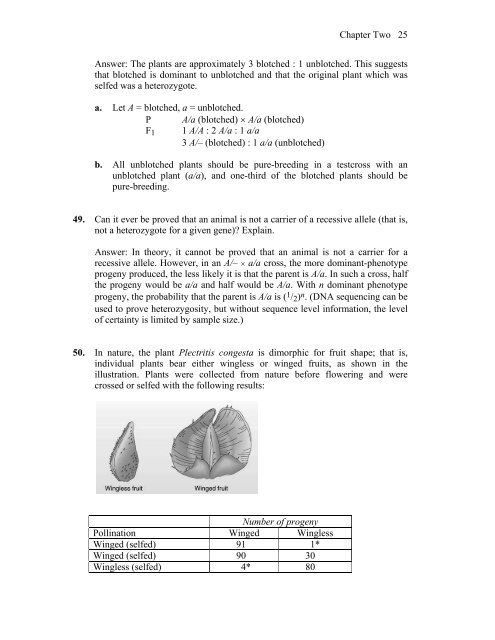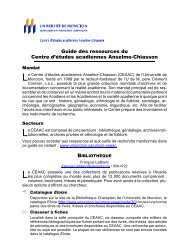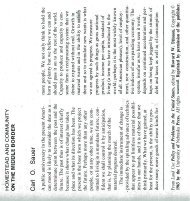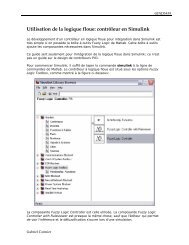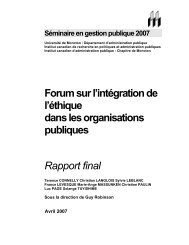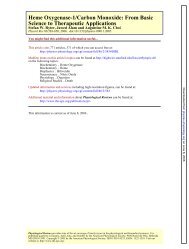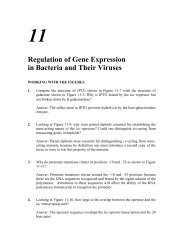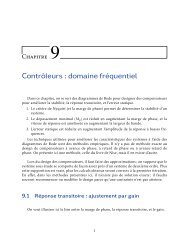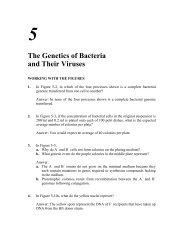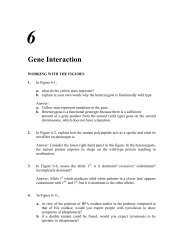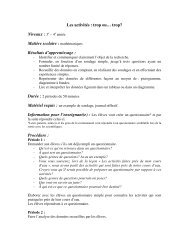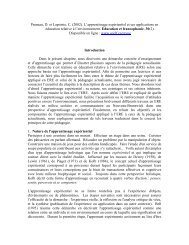IGA 8/e Chapter 2
IGA 8/e Chapter 2
IGA 8/e Chapter 2
Create successful ePaper yourself
Turn your PDF publications into a flip-book with our unique Google optimized e-Paper software.
<strong>Chapter</strong> Two 25Answer: The plants are approximately 3 blotched : 1 unblotched. This suggeststhat blotched is dominant to unblotched and that the original plant which wasselfed was a heterozygote.a. Let A = blotched, a = unblotched.P A/a (blotched) A/a (blotched)F 1 1 A/A : 2 A/a : 1 a/a3 A/– (blotched) : 1 a/a (unblotched)b. All unblotched plants should be pure-breeding in a testcross with anunblotched plant (a/a), and one-third of the blotched plants should bepure-breeding.49. Can it ever be proved that an animal is not a carrier of a recessive allele (that is,not a heterozygote for a given gene)? Explain.Answer: In theory, it cannot be proved that an animal is not a carrier for arecessive allele. However, in an A/– a/a cross, the more dominant-phenotypeprogeny produced, the less likely it is that the parent is A/a. In such a cross, halfthe progeny would be a/a and half would be A/a. With n dominant phenotypeprogeny, the probability that the parent is A/a is ( 1 / 2 ) n . (DNA sequencing can beused to prove heterozygosity, but without sequence level information, the levelof certainty is limited by sample size.)50. In nature, the plant Plectritis congesta is dimorphic for fruit shape; that is,individual plants bear either wingless or winged fruits, as shown in theillustration. Plants were collected from nature before flowering and werecrossed or selfed with the following results:Number of progenyPollination Winged WinglessWinged (selfed) 91 1*Winged (selfed) 90 30Wingless (selfed) 4* 80


